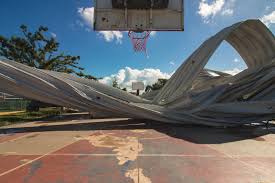Puerto Rico’s biggest bank came out of Hurricane Maria stronger

PUERTO RICO was never the most financially stable of places. After years of trouble its government defaulted in 2016. Then, in 2017, Hurricane Maria roared in. The island took close to a year to restore electricity fully, and financial restructuring continues. Manufacturers decamped during the power cuts; many did not return. Banco Popular, the biggest financial institution, which had already been buffeted by a wave of bad loans, was hit by another. Its failure would have been no surprise.
Prepare to be astonished, then: Popular is in pretty decent shape. Part of that is due to the island’s tentative recovery. Sales of cement and cars have been strong; tourism is starting to pick up. But even so, Popular’s performance is striking. The KBW index, a broad measure of American banking stocks, has fallen by 16% in the past year; Popular’s shares are up by a third. Over the past five years the KBW index rose by 46%; Popular’s shares doubled.
Earnings, published on January 23rd, were up 77% in 2018, after stripping out some large one-time items. Return on assets on the same basis was 1.04%, strong for a bank, and return on equity a passable 9%. Non-performing loans have fallen to 2.3% of total loans, from 9.6% in 2009. The bank’s core capital ratio (common equity as a share of risk-adjusted assets) is so high, at 17%, that the bank could be considered over-capitalised. Few investors are complaining, though. Buy-backs doubled this year, dividends rose by 20% and its solid balance-sheet has allowed it to refinance debt yielding as much as 8% with debt yielding 6%, despite a broader trend of rising interest rates.
Large American banks came out of the crisis protected from failure but blocked from acquisitions and encouraged to shrink. Popular—no tiddler, with $ 48bn in assets—is not only free of those restraints but benefits from them. It sold some operations after the crisis to raise capital and increase efficiency: branches in Chicago and Los Angeles, and half of a data-processing firm. But it also made acquisitions. As the first jitters were starting in 2007, it bought Citibank’s Puerto Rican retail network. It picked up two Puerto Rican banks that had gone into receivership: Westernbank in 2010 and Doral in 2015. In 2018, when regulators were pressing Wells Fargo to reduce assets, Popular bought from it a long-coveted car-hire company.
The Wells deal has already exceeded profit expectations. Together, the acquisitions have boosted Popular’s market share to 54% of the island’s deposits and 46% of loans. Normally that would look like over-concentration, but right now solvency and stability are more urgent concerns.
And Popular banked a great deal of credit during Hurricane Maria. Twelve hours after the storm had blown over, the bank’s main data centre had been restarted on emergency generators. Many mobile-phone towers and phone lines remained down for months, making branches hard to operate. But people and businesses were desperate for cash to buy and sell fuel, food and other staples. Popular’s response—an extraordinary one for extraordinary times—was to download data onto encrypted laptops early every morning and send it out with employees who would stand by tellers and authorise withdrawals.
That response may explain the most telling fact about Popular’s performance: although Puerto Rico’s population has declined since Maria, the bank’s customer base has grown. Much of what bankers do is abstract and technical. Just as important, though less tangible, is the trust earned by keeping going when others do not.










